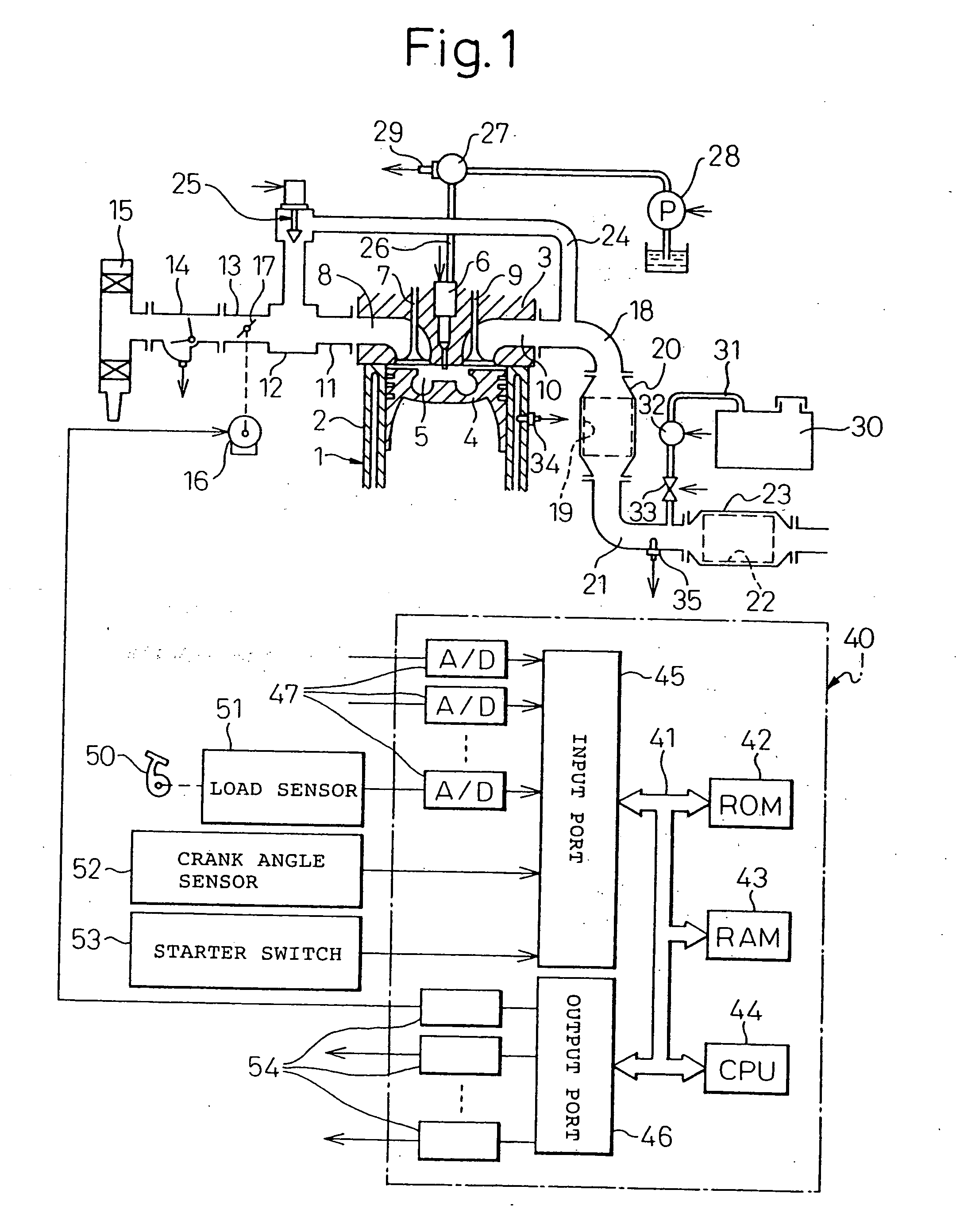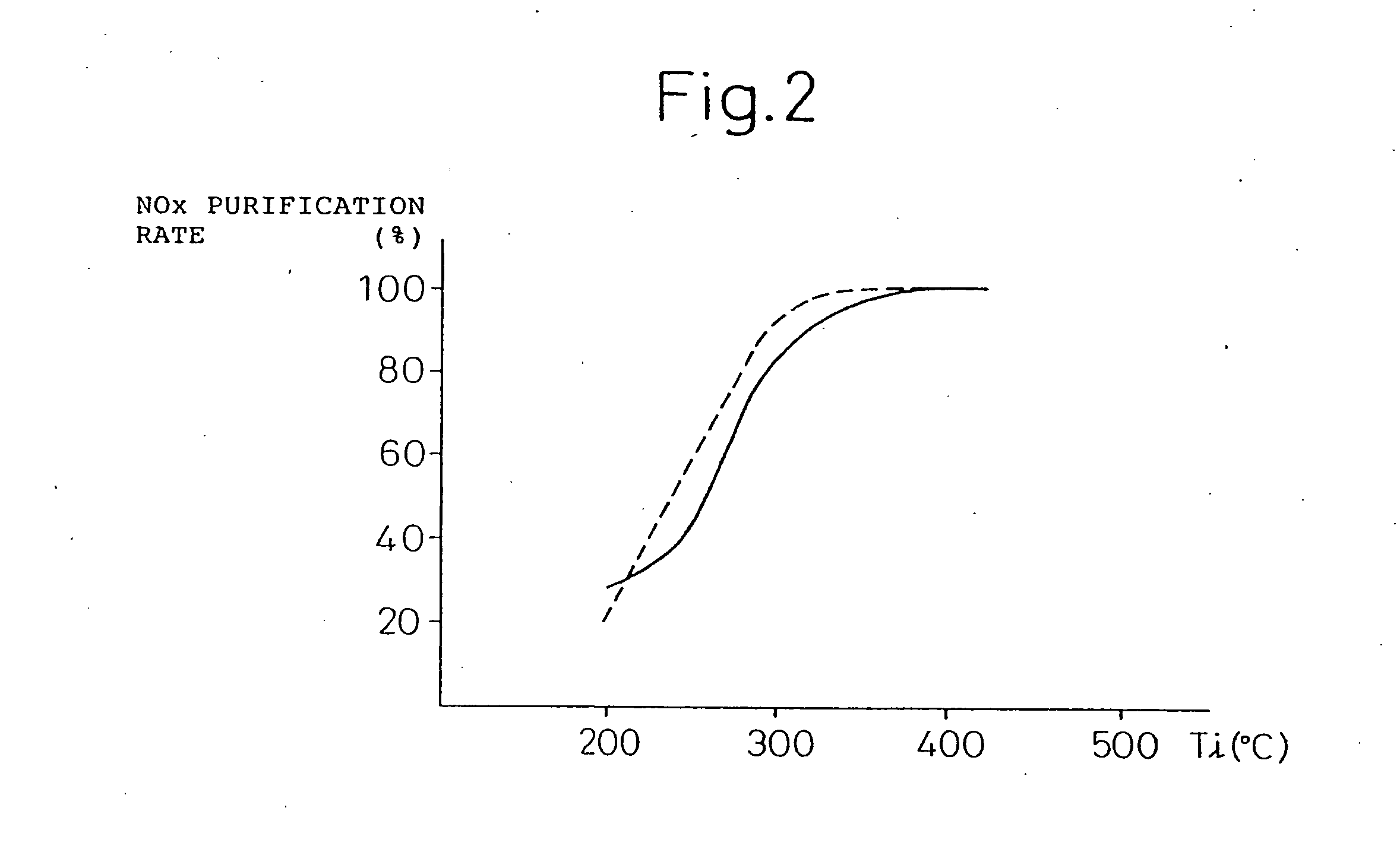Exhaust gas purification device of internal combustion engine
a technology of exhaust gas purification and internal combustion engine, which is applied in the direction of exhaust treatment electric control, electrical control, separation process, etc., can solve the problems of low nosub>x /sub>purification rate, inability to obtain high nosub>x /sub>purification rate, and lower nosub>x /sub>purification rate, etc., to achieve the effect of higher nox purification ra
- Summary
- Abstract
- Description
- Claims
- Application Information
AI Technical Summary
Benefits of technology
Problems solved by technology
Method used
Image
Examples
first embodiment
[0064] Next, the feed control of an aqueous urea solution according to the present invention will be explained.
[0065] The amount of NOx discharged from the combustion chamber 5 per unit time increases along with an increase in the engine load. Therefore, as shown in FIG. 6A, the amount of NOx discharged from the combustion chamber 5 per unit time becomes greater the higher the temperature Ti of the exhaust gas flowing to the catalyst 22. Further, as shown in FIG. 6B, the amount of NOx discharged from the combustion chamber 5 per unit time is proportional to the amount Ga of intake air. Therefore, the amount QE of urea per unit time giving the equivalent ratio for the amount of NOx in the exhaust gas becomes a function of the temperature Ti of the exhaust gas and the amount Qa of the intake air. In this embodiment of the present invention, the amount QE of urea of the equivalent ratio to be fed per unit time is stored in advance in the ROM 42 in the form of a map as shown in FIG. 6C ...
second embodiment
[0086] Next, an explanation will be given of a second embodiment with reference to FIG. 14 and FIG. 15.
[0087] When the amount of feed of the aqueous urea solution is small, the aqueous urea solution disperses in the exhaust gas. If the aqueous urea solution disperses in the exhaust gas, the urea in the aqueous urea solution will easily decompose by the heat and as a result it will become difficult to store the urea fed in the catalyst 22. As opposed to this, if the amount of feed of the aqueous urea solution is increased, the density of the urea in the exhaust gas will become higher and as a result the urea will become harder to decompose by heat, so the urea fed will be able to be stored in the catalyst 22.
[0088] Therefore, in the second embodiment, as shown in FIG. 14, in the operation region I, operation region II, and at the time of deceleration, the aqueous urea solution is fed so that the amount of urea to be fed becomes the amount of urea of the equivalent ratio, the urea is...
third embodiment
[0095] Next, an explanation will be given of a third embodiment while referring to FIG. 16 and FIG. 17.
[0096] When the temperature of the exhaust gas is low, the amount of NOx in the exhaust gas becomes extremely small. Therefore, in this third embodiment, when the temperature Ti of the exhaust gas flowing into the catalyst 22 is lower than a predetermined value T0, for example, 132° C., the continuous feed of the aqueous urea solution is stopped and, as shown in FIG. 16, in the operation region I and at the time of deceleration, large amounts of aqueous urea solution are fed in pulses at time intervals to make the urea in the aqueous urea solution be stored in the catalyst 22.
[0097] Note that in the third embodiment as well, the routine shown in FIG. 10 is used, but the routine shown in FIG. 17 is used only for step 103 of FIG. 10.
[0098] Referring to FIG. 17, first, at step 400, it is determined if the feed stop flag indicating that the feed of the aqueous urea solution should be...
PUM
| Property | Measurement | Unit |
|---|---|---|
| Temperature | aaaaa | aaaaa |
Abstract
Description
Claims
Application Information
 Login to View More
Login to View More - R&D
- Intellectual Property
- Life Sciences
- Materials
- Tech Scout
- Unparalleled Data Quality
- Higher Quality Content
- 60% Fewer Hallucinations
Browse by: Latest US Patents, China's latest patents, Technical Efficacy Thesaurus, Application Domain, Technology Topic, Popular Technical Reports.
© 2025 PatSnap. All rights reserved.Legal|Privacy policy|Modern Slavery Act Transparency Statement|Sitemap|About US| Contact US: help@patsnap.com



